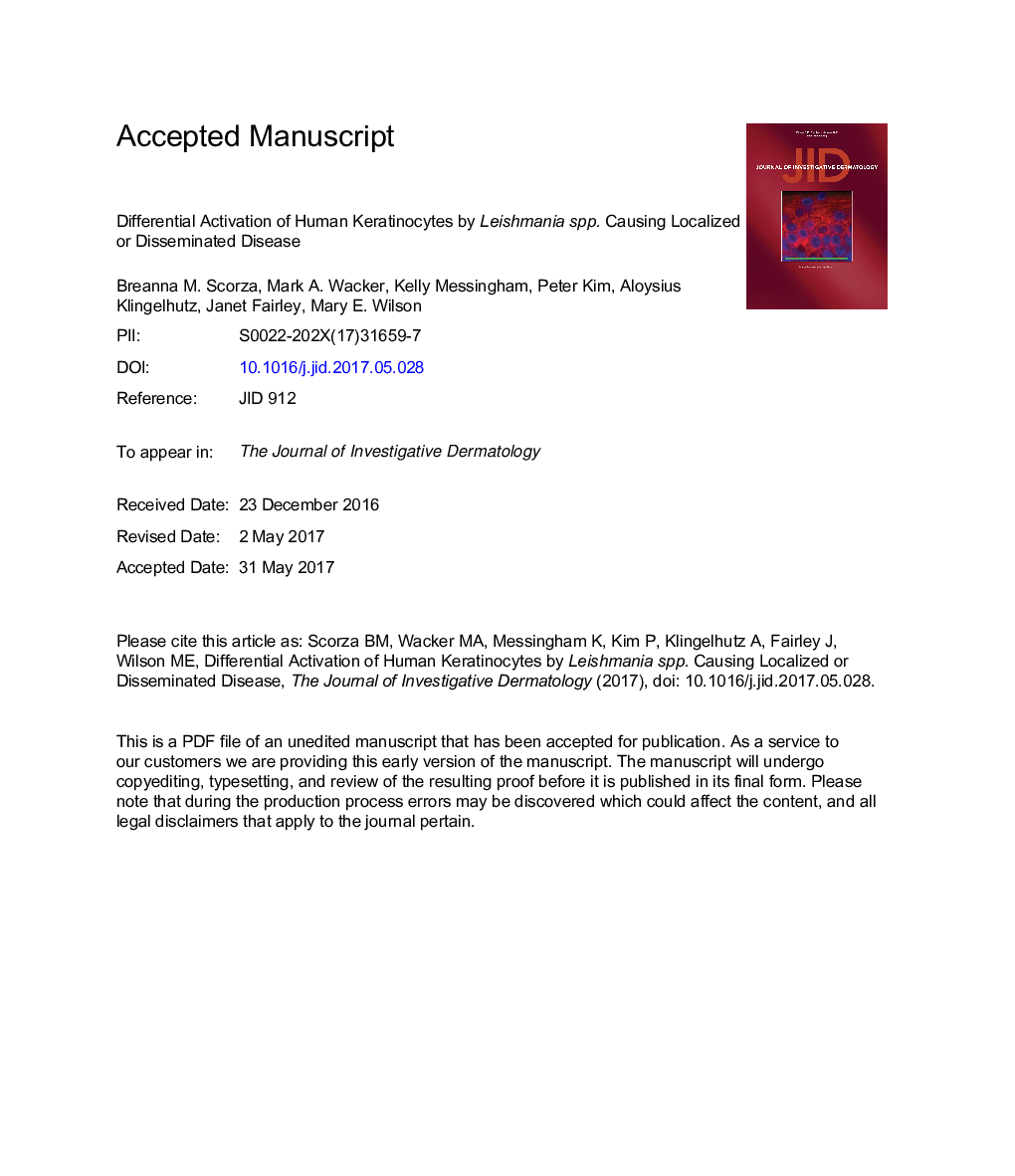| Article ID | Journal | Published Year | Pages | File Type |
|---|---|---|---|---|
| 8716344 | Journal of Investigative Dermatology | 2017 | 31 Pages |
Abstract
All Leishmania species parasites are introduced into mammalian skin through a sand fly bite, but different species cause distinct clinical outcomes. Mouse studies suggest that early responses are critical determinants of subsequent adaptive immunity in leishmaniasis, yet few studies address the role of keratinocytes, the most abundant cell in the epidermis. We hypothesized that Leishmania infection causes keratinocytes to produce immunomodulatory factors that influence the outcome of infection. Incubation of primary or immortalized human keratinocytes with Leishmania infantum or Leishmania major, which cause visceral or cutaneous leishmaniasis, respectively, elicited dramatically different responses. Keratinocytes incubated with L. infantum significantly increased expression of proinflammatory genes for IL-6, IL-8, tumor necrosis factor, and IL-1B, whereas keratinocytes exposed to several L. major isolates did not. Furthermore, keratinocyte-monocyte co-incubation studies across a 4 µM semipermeable membrane suggested that L. infantum-exposed keratinocytes release soluble factors that enhance monocyte control of intracellular L. infantum replication (P < 0.01). L. major-exposed keratinocytes had no comparable effect. These data suggest that L. infantum and L. major differentially activate keratinocytes to release factors that limit infection in monocytes. We propose that keratinocytes initiate or withhold a proinflammatory response at the site of infection, generating a microenvironment uniquely tailored to each Leishmania species that may affect the course of disease.
Keywords
Related Topics
Health Sciences
Medicine and Dentistry
Dermatology
Authors
Breanna M. Scorza, Mark A. Wacker, Kelly Messingham, Peter Kim, Aloysius Klingelhutz, Janet Fairley, Mary E. Wilson,
